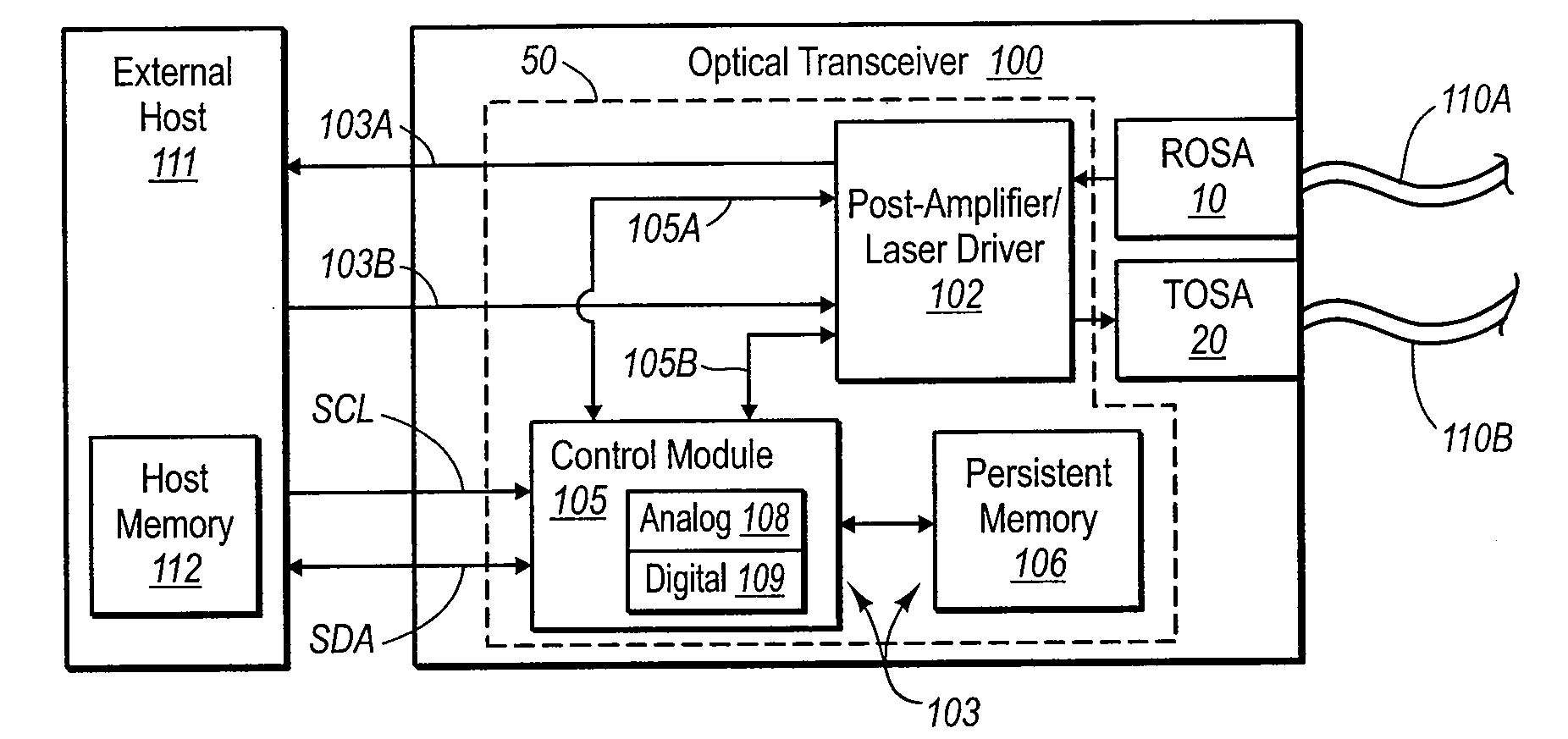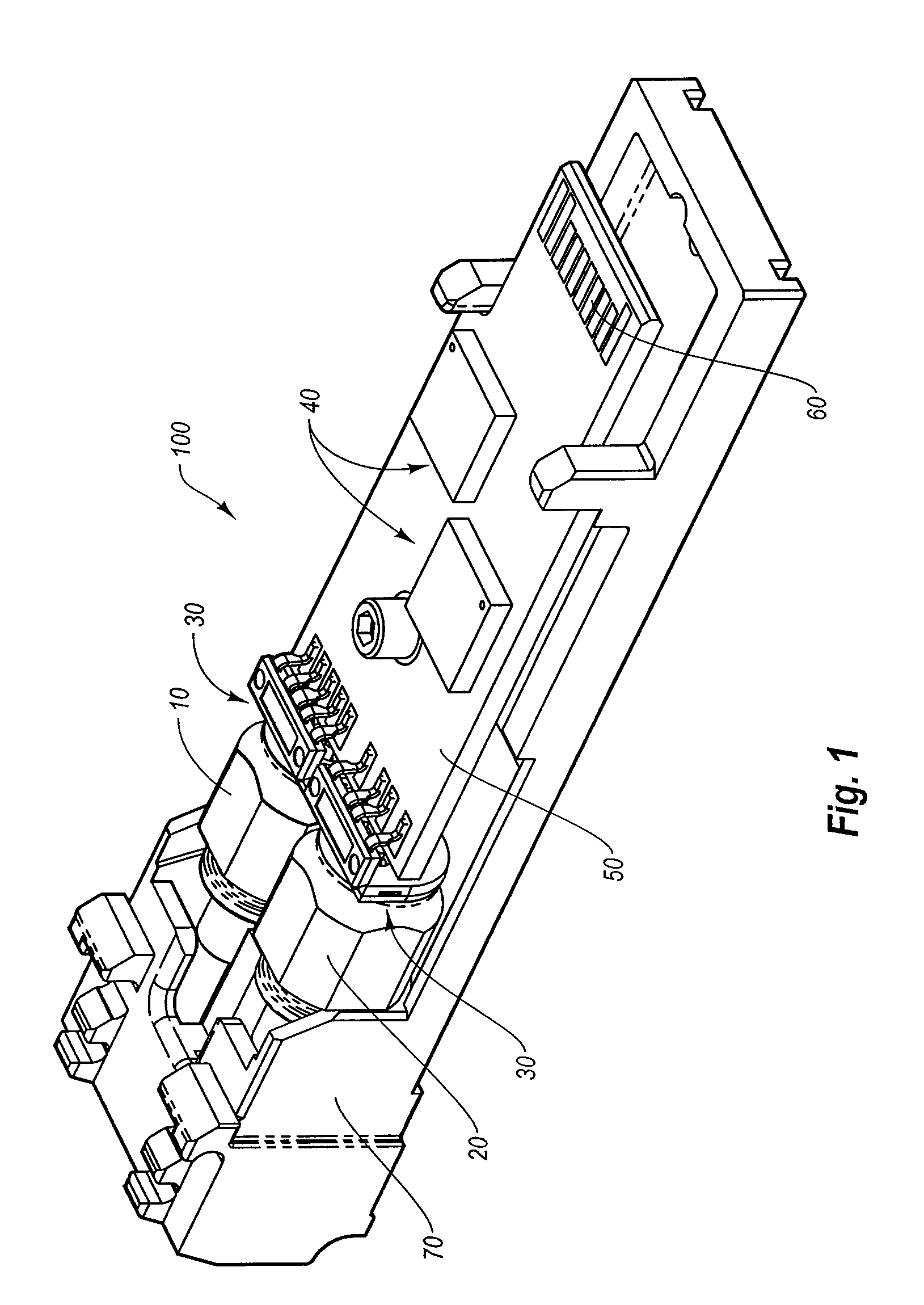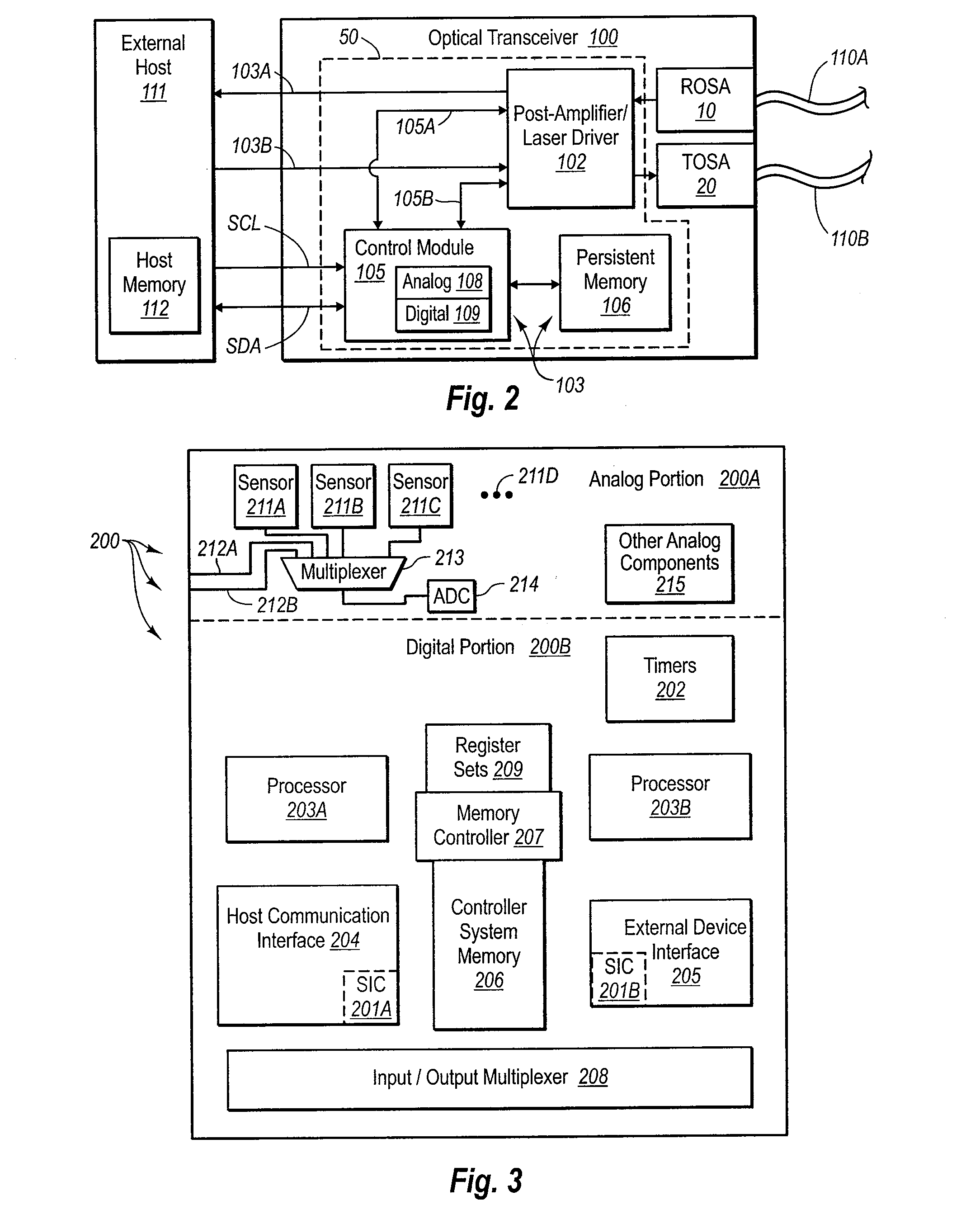Determination and adjustment of laser modulation current in an optical transmitter
a technology of optical transmitter and laser module, which is applied in the direction of optical elements, instruments, transmission monitoring, etc., can solve the problems of transceiver design typically not enabling the measurement and/or reporting of laser modulation current data, and the range of laser module output to exceed the acceptable range for such parameters, etc., to achieve reliable transceiver performance
- Summary
- Abstract
- Description
- Claims
- Application Information
AI Technical Summary
Benefits of technology
Problems solved by technology
Method used
Image
Examples
Embodiment Construction
[0022]Reference will now be made to figures wherein like structures will be provided with like reference designations. It is understood that the drawings are diagrammatic and schematic representations of exemplary embodiments of the invention, and are not limiting of the present invention nor are they necessarily drawn to scale.
[0023]FIGS. 1-6 depict various features of embodiments of the present invention, which are generally directed to systems and methods for controlling the modulation current of a laser included as a component of an optical transmitter, such as an optical transceiver module. Control of the modulation current, which affects various laser operational parameters including extinction ratio and optical modulation amplitude, enables operation of the laser to be optimized, thereby enabling reliable transceiver performance to be achieved.
[0024]In the exemplary embodiments to follow, the laser is included in a transmitter optical subassembly (“TOSA”) of an optical transc...
PUM
 Login to View More
Login to View More Abstract
Description
Claims
Application Information
 Login to View More
Login to View More - R&D
- Intellectual Property
- Life Sciences
- Materials
- Tech Scout
- Unparalleled Data Quality
- Higher Quality Content
- 60% Fewer Hallucinations
Browse by: Latest US Patents, China's latest patents, Technical Efficacy Thesaurus, Application Domain, Technology Topic, Popular Technical Reports.
© 2025 PatSnap. All rights reserved.Legal|Privacy policy|Modern Slavery Act Transparency Statement|Sitemap|About US| Contact US: help@patsnap.com



